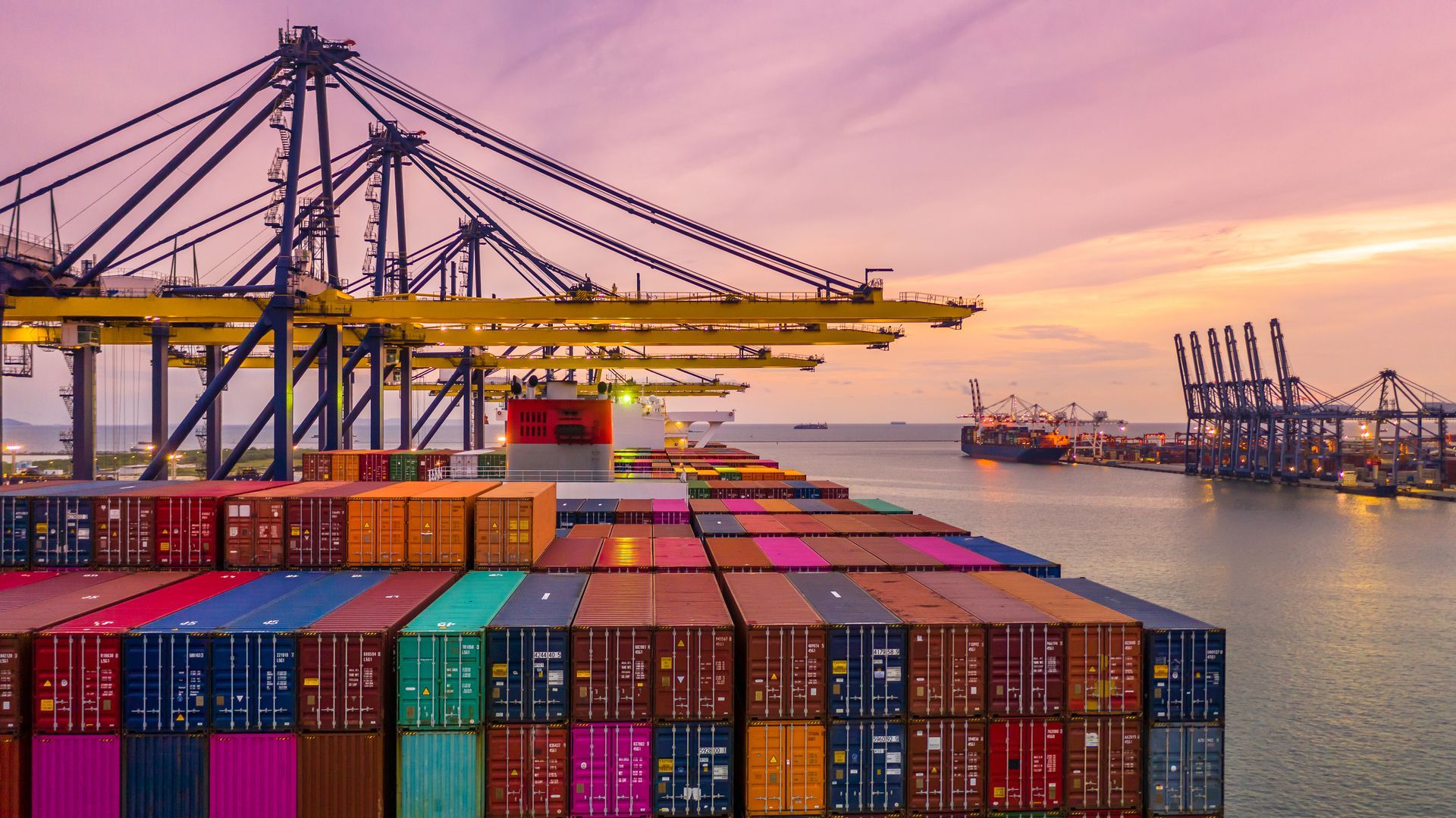Supplies Made Simple™: Talk to our Sales Team today!
The Evolution of Supply Chain Management: Past, Present, and Future
The Evolution of Supply Chain Management: Past, Present, and Future

SCM, or supply chain management, is essential to efficiently flow goods from producers to customers. What was once straightforward systems of bartering and trading have developed into a complex, technologically advanced procedure that is now necessary for the operation of businesses.
SCM has evolved to meet changing market demands, shifts in the economy, and technological advances, all of which have made it more important for efficiency and profitability. Gaining insight into its past evolution will help us better prepare for new developments.
The Origins of Supply Chain Management (Past)
Early trade routes and manual processes
The history of supply chain management dates back to the era of ancient civilizations when trade routes such as the well-known Silk Road enabled the transfer of products between far-flung locations. During these early periods, barter—a direct exchange of products without the use of money—was a major component of business. To track inventory and guarantee the timely delivery of goods, traders had to rely on antiquated methods of manual and labor-intensive logistics management.
The main instruments for keeping track of stock and shipments were physical records, frequently in the form of ledgers or handwritten notes. With the growth of trade, traders created basic methods for arranging and transporting goods, setting the stage for the eventual development of contemporary supply chain procedures.
The Industrial Revolution
A significant turning point in the history of supply chain management was the Industrial Revolution. The production process was revolutionized when factories were able to produce items on a large scale thanks to mechanization. The move to mass production created new difficulties for distribution, transportation, and inventory control. With the increasing volume of commodities being produced, supply networks had to shift and were no longer restricted to small-scale, local exchanges.
During this period, early supply chain management (SCM) concepts like inventory control, centralized manufacturing, and transportation network coordination gained traction. Faster distribution was made possible by steamships and railroads, and new organizational techniques were developed to guarantee that products were delivered from factories to customers in an effective manner.
Post-War Era and the Rise of Globalization
After World War II, there was a period of unparalleled growth in international business and a rapid expansion of the global economy. Supply chains became more complex in this period of globalization because businesses now had to coordinate the flow of goods and resources across international borders. The complexity and length of supply chains increased, necessitating closer cooperation between distributors, manufacturers, and suppliers.
Around this time, technology started to take on a more significant role in material handling this complexity. The digital era of supply chain management began with the advent of barcodes and early computer systems, which allowed businesses to better track inventories, handle business logistics, and streamline operations management. This paved the way for the technical advancements that will mold supply chain management in the future.

The Modern Supply Chain (Present)
Technology and Digital Transformation
The digital revolution has been fully embraced by supply chain management in today's fast-paced commercial climate. Enterprise resource planning (ERP) systems, automation, and data analytics are examples of technologies that have proven indispensable for handling the intricacies of contemporary supply chains. Order processing and warehouse management are two examples of repetitious processes that automation simplifies, lowering the possibility of human error and increasing productivity.
Insights into client demand, inventory levels, and supplier performance are made possible in large part by data analytics, which enables businesses to make more precise judgments. ERP solutions combine many facets of supply chain management, giving instantaneous supply chain visibility into everything from procurement and logistics planning to inventory control. These systems let businesses track items internationally, plan the best routes for delivery, and more accurately predict supply and demand, all of which increase overall productivity and cut expenses.
Key Trends
In modern supply chain management, several significant themes have evolved that are influencing how businesses run:
JIT (just-in-time) inventory: By providing commodities precisely when needed in the production process, decreasing surplus inventory, and lowering storage costs, this technique aims to reduce waste. Businesses can eliminate the need for big warehouses and free up funds for other investments by precisely timing delivery.
Lean Manufacturing: The goal of lean manufacturing is to remove inefficiencies throughout the entire production process. This strategy reduces waste while increasing customer satisfaction and product quality through operational simplification and a continual improvement focus.
Artificial Intelligence (AI) and the Internet of Things (IoT): By delivering real-time monitoring, predictive analytics, and increased transparency throughout the supply chain, AI and IoT technologies are defining supply chain management in a new way. Businesses may minimize lead times, optimize inventory levels, and predict demand variations with the use of predictive analytics. Real-time data on the location and condition of commodities is provided by IoT devices like sensors and smart tags, which facilitates quicker response times and improved decision-making.
COVID-19’s Impact
Critical weaknesses in global supply networks were made public by the COVID-19 pandemic, which led to major disruptions and shortages across numerous industries. The flow of commodities was disrupted by lockdowns, travel restrictions, and changes in customer behavior, which brought attention to the vulnerability of heavily integrated supply networks.
On the other hand, creativity and adaptability were also spurred by the pandemic. Businesses started establishing buffer stocks to guard against shortages, diversifying their supplier bases to lessen reliance on single-source suppliers, and implementing flexible manufacturing processes that could adjust to shifting circumstances as a response to these difficulties. Supply chain strategies have changed as a result of these adjustments, pushing businesses to create more adaptable, nimble systems that can survive shocks in the future.

Future Trends in Supply Chain Management
Artificial intelligence (AI) and machine learning will be used by intelligent systems to drive supply chain management in the future. These systems will alter operations. Algorithms for machine learning will be essential for forecasting demand trends, streamlining transportation routes, and enhancing decision-making. Large volumes of data will be analyzed in real-time by these computers, which will spot patterns and abnormalities that human operators could miss.
Artificial intelligence (AI)-driven solutions will improve supply chain efficiency by automating labor-intensive processes like inventory control and demand forecasting and by making more precise resource allocation suggestions. As these technologies advance, businesses will be able to save operating costs, enhance customer happiness, and react to market changes more quickly.
Sustainability and Eco-Friendly Practices
Supply chains are starting to place a greater emphasis on sustainability as environmental issues gain prominence. Businesses are facing mounting pressure to cut their carbon footprints and implement eco-friendly practices from investors, regulators, and customers. Green logistics components and methods are emerging in response to this change, to minimize environmental effects through the optimization of transportation routes, the reduction of emissions, and the use of energy-efficient vehicles.
The circular economy model, in which things are made to be recyclable, reused, and to reduce waste at every stage of the product lifespan, is being adopted by a lot of firms. Future supply chains will also need to include low-impact packaging, renewable energy, and sustainable supply chain sourcing as businesses look to strike a balance between environmental duty and profitability.
Blockchain and Transparency
Blockchain technology offers a safe, decentralized way to monitor things from raw materials to final products, which has the potential to revolutionize supply chain transparency. An immutable ledger can be used to record each transaction in the supply chain, guaranteeing accountability and traceability at every stage. This degree of openness will be especially helpful in sectors like pharmaceuticals, food, and luxury goods that have strict quality control requirements.
By confirming the origins of materials, blockchain will also aid in lowering fraud, ensuring the validity of products, and promoting ethical sourcing. Customers will have more faith in the quality of the goods they buy as supply chains become more transparent, and businesses will be better able to comply with legal requirements.
The Role of 3D Printing
Because it allows for localized production, additive manufacturing, also referred to as 3D printing, is poised to upend an established supply chain strategy. With the use of this technology, businesses may now manufacture items and parts as needed, negating the need for centralized storage and expansive production facilities. Companies can cut lead times, shipping expenses, and their environmental effect by manufacturing components closer to the point of consumption.
Additionally, 3D printing facilitates additional customization, giving companies the flexibility to address unique consumer needs through production. Supply chains may change in the future as a result of 3D printing technology's ability to decentralize production and facilitate more responsive, flexible operations.
Resilience and Risk Management
Critical weaknesses in global supply networks were made public by the COVID-19 pandemic, which forced companies to reconsider their approaches and give resilience priority. Moving forward, businesses will concentrate on developing supply networks that are resilient to shocks and can quickly adjust to shifting circumstances. One of the most important strategies to lessen reliance on any one supplier or geographic location will be to diversify suppliers across several regions.
Companies that embrace more flexible manufacturing methods and keep strategic inventories of necessary resources will also improve their risk management frameworks. To anticipate possible risks, such as natural disasters or political instability, advanced analytics, and scenario planning will be essential. This will enable businesses to plan and take proactive measures to address any obstacles that may arise.

The Main Takeaway
Supply chain management is now the backbone of global business, having experienced a dramatic shift from simple trade systems to a highly complex and technology-driven activity. Technologies like automation, artificial intelligence, and advanced analytics have transformed an industry that formerly depended solely on manual processes and simple logistics. These technologies allow businesses to satisfy client needs, optimize operations, and compete globally.
Supply chain management is expected to develop further in the future, with new trends like resilience, blockchain, artificial intelligence, and sustainability becoming increasingly important to companies' capacity to succeed. In the upcoming years, supply chains will be characterized by their capacity for innovation, adaptation, and prediction.
SCM has an exciting future full of infinite opportunities. Businesses may stay ahead of the curve and negotiate an increasingly complex global economy by implementing eco-friendly practices, embracing smarter systems, and creating more robust supply chains. Leveraging these developments and converting obstacles into opportunities will require remaining knowledgeable and adaptable.
Do you want to be informed about the newest developments and trends in global supply chain management?
Register for our email subscription and follow Concentric Health Alliance social added below to receive more knowledgeable information, useful advice, and updates on the state of supply chain management. Remain up to date and remain in the lead!












